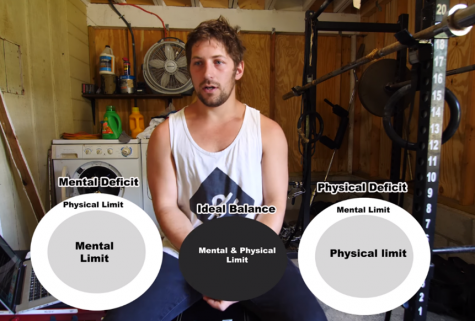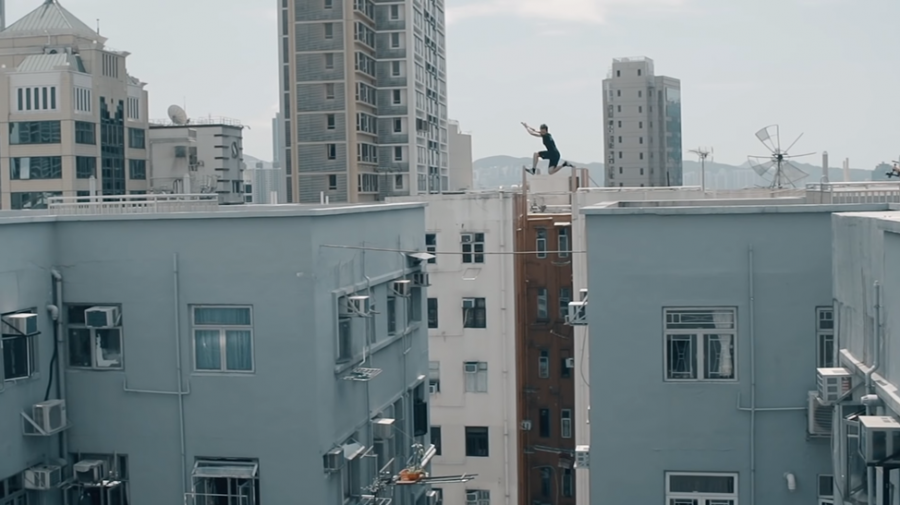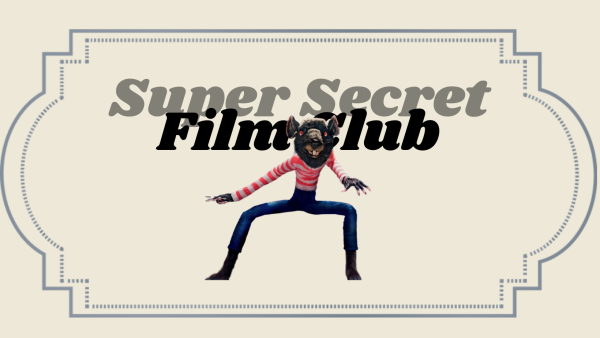Parkour, What You Want to Know
October 27, 2020
Although parkour is widely seen as a joke from the tv show The Office, it is actually a disciplined sport with many practitioners worldwide. Similar to skateboarding, the sport has pushed human boundaries physically and artistically in a very unique way; This is because over the years, traceurs, people who practice parkour, moved from parkour, efficient movement designed for speed, to more creative and stylish movement called freerunning.
The physical benefits you can gain from practicing parkour are immense. First, it is a good aerobic exercise that gets all of the body’s parts engaged, and consequently rounds out the strength in the body. By jumping, swinging, climbing, and flipping you can get in a great workout as a beginner. I say beginner because as your body becomes more accustomed to the motion you will gradually become less sore performing the same motions; However, what’s great here, is that once you adjust to 8-foot jumps, you can go find ones that are 9 or 10 or more. Then from there, you can find jumps that change in elevation, jumps to rails, running jumps, or consecutive one leg jumps called strides. Parkour / freeruning is by nature very versatile and therefore allows you to change your strength in different ways.
Another great benefit that many might not quite understand without actually moving their bodies through the air or over obstacles is the physical awareness you gain of your body and its positioning. You learn to feel where your body is as its moving and how far you are away from obstacles physically. Two specific examples of this awareness are balance and air awareness. Balancing on a rail or thin ledge requires your smaller muscle stabilizers to activate and constantly adjust to your body’s position as your balance shifts side to side. A different aspect to body control is air awareness, understanding where your body is in the air compared to the ground and other obstacles around you. This can be during a jump from one ledge to another or during a flip. What’s wild is that as you practice, time will feel like it slows down in the air. What I mean by this is in the beginning because your awareness isn’t as great, things will happen very quickly. Ever get flipped upside down or fall really fast and you’re left wondering how you got there? It’s the same feeling when you do a backflip for the first time. However, as you practice more and more, the amount of information you can handle in the air becomes greater. This is because the flip gets more ingrained into your muscle memory and your mind can begin to focus on other things. This process is how someone can do a backflip with a twist at the end. Because they can wait for the right moment in their flip to initiate the twist and land. Although everyone might not start off flipping, parkour / freerunning are very scalable according to your strength and the same principles apply. Although, it’s necessary to have a great level of self-awareness when pushing these limits.
If you do not condition your body for the stress that freerunning places on your system, YOU WILL SUFFER. Say your legs are simply not strong enough to absorb a 7 foot drop landing, then most certainly your knees will take some of that impact and over time this can develop into a repeated stress injury; and with parkour, this can happen way easier because you are using all parts of the body. Things you would never expect, like your elbows, shoulders, hips, or anything else can flare up if the muscles around them aren’t strong. Also, training with improper technique can also contribute to joint pain over time, as well as decrease safety which can lead to a bigger injury from falling. Which is why it’s important to workout regularly while practicing parkour and let your body rest after intense training sessions. Although we need to have strong bodies the most important part in the whole process is your mentality towards training.

Mainly there are two types of people when beginning training: those who are limited by their mental capacity and those who are limited by their physical capabilities. We often are imbalanced in these two parts of our lives and it will show in your training. If you are afraid of trying new things, but your body is physically capable, then you need to develop your ability to deal with fear. If you are physically strong, but get injured from flinging yourself at every challenge, even if you have poor technique, you need to develop your mental awareness of your capabilities. The right balance is to push your mental and physical limits to the same extent. This way, what you think you can do mentally and what your body can do physically are aligned. A great video to watch explaining this in detail is, “Progressively Overloading the Mind for Parkour,” by Rilla Hops, a parkour group in Florida. Here’s an example which might better illustrate what training with progressions means and how it can benefit your gains and safety.
What we call training with progressions, is taking small steps that break down your goal and make it less scary. Say you want to jump between two walls, both about four feet off the ground and four feet apart. You can obviously jump this distance on the ground, but the reason we get scared is the height, it’s natural. So, you might mark this distance on the ground and practice jumping, imagining you were doing the real thing. You might then elevate the height slightly to walls that are only two feet off the ground. Then, you might get to your goal jump, and literally take small steps between them, to feel out the edges and the distance. The reason we do this is to push our mental limit when we know we can physically do something.
Practicing bails is another important factor in calming the mind. If your mind or body isn’t calm, then there’s a chance mid-air you will bail out of fear and possibly get injured. Committing to the jump is necessary and practicing falling can help with getting over that fear. Controlled bails are fake failing so to speak, or missing the jump on purpose, to simulate falling, but landing properly. This lets your body know that if something goes wrong, it has a plan. Just like any other movement you might perform; you must practice bailing enough so that your body ingrains it into muscle memory. You need your bails to be instinctual and automatic, because it’s difficult to think about how to land properly during the moment you screw up! Right here is the golden ticket.
In life you will have obstacles. Things that scare you. So, you must prepare for them. You might be underprepared in some cases and you might fall. But you get back up, and you learn for next time. You learn to create a process for success and ways to handle failure. Parkour and freerunning aren’t just about reckless stunts, although they can be if that’s your mentality. It’s about the way you see things. It’s about discipline, self-awareness, and pushing your boundaries. It’s about freedom of yourself and your own bad habits. It’s an outlet of movement through which the rhythm of life flows through, over, under, and around.










Mike Ziegler • Oct 28, 2020 at 7:32 am
Awesome read. Thanks Alex!